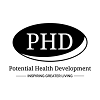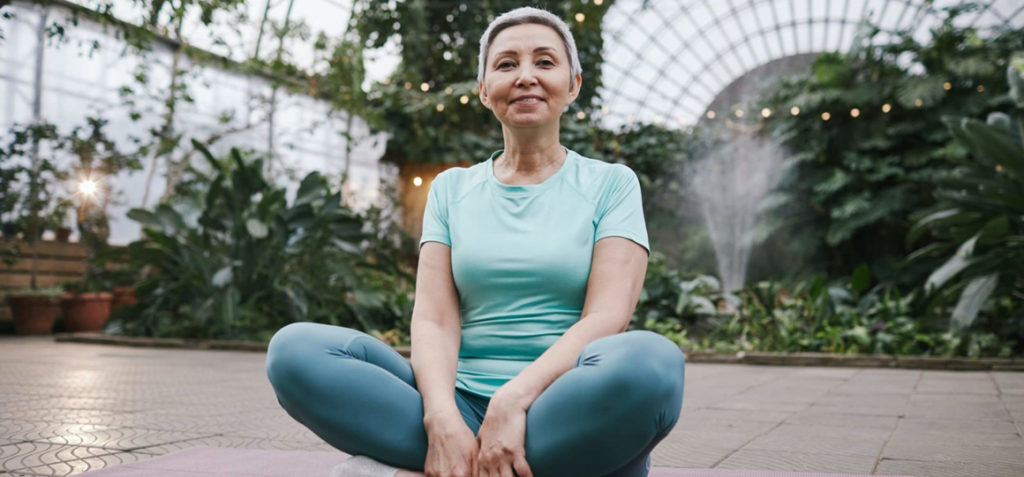Menstruation, or a period, is a steroid-regulated phenomenon in which blood and mucosal tissue from the uterine endometrium are shed through the vagina.
This is typically a 28–35 day cycle consisting of two phases: follicular and luteal. The length of a period is the number of days between the first day of menstrual bleeding of one cycle to the start of menstrual bleeding of the next cycle.

Highlights
- Although workouts can improve menstrual irregularities, the intensity and duration can strongly influence the end-result,
- Athletes who undergo intense workouts have significant menstrual irregularities and PMS compared to sedentary women and thus require medical management before further training,
- Hydrating with water and electrolytes to replenish the lost fluids and stretching post-workout is essential for muscle recovery.
Some of the most common terminologies related to menstruation are
- Polymenorrhea: When the menstrual cycle occurs within 21 days.
- Oligomenorrhea: When the cycle is prolonged for over 35 days.
- Amenorrhea: The absence of a period.
- Dysmenorrhea: A painful period or menstrual cramps.
Estrogen and progesterone play a key role in the mechanism of menstruation. Along with its anabolic function (i.e., metabolic activity and growth) estrogen has membrane-stabilizing effects, antioxidant properties and neuroexcitatory effects (which protect the body from exercise-induced muscle damage and aid voluntary activation).
Whereas, progesterone is a catabolic hormone (responsible for the breaking down of molecules to release energy). The levels of these two hormones rise and fall inversely.
While fluctuations in hormone levels and premenstrual syndrome (PMS) can delude us into considering ‘resting’ as the only possible relief during the menstrual period, overlooking exercise and fitness entirely can have a major drawback to women’s health.
Various literature and research articles prove the positive impact of regular aerobic and stretching exercise (compared to anti-inflammatory drugs or resting) on the symptoms associated with dysmenorrhea. The pain during dysmenorrhea is due to the rise in prostaglandin in the uterus as a result of decreasing progesterone levels.
Researchers have depicted that regular exercise during menstruation will not only decrease prostaglandin but also improve blood flow and release endorphins to lower stress.
Exercising during periods
Here are four points to consider when exercising during periods:
Pick the workout/sport you like: Performing an exercise that you prefer and find doable will allow your mind to be at peace and make the session more enjoyable and regular.
Do low-to medium-intensity exercises: This will give you the boost your body requires without causing more pain or aggravating cramps.
Beat the bloat: A pseudo weight gain can occur during periods due to hormonal imbalance and water retention. This can be cured by performing light exercises everyday.
Choose comfort: Discomfort during periods can become a barrier to your workout. Wearing comfortable period products with suitable clothing will let you be at ease.
There are now apps available to help guide women how to effectively plan their workouts around their menstrual cycles.
By using data points like HRV and resting heart rate along with subjective questions, a readiness score is calculated to help women know what types of workouts are best suited to the specific phase in their cycle they are in.

How to plan your workouts? Here is a broad and generalised guideline you could follow.
- Day 1–7: Menstrual phase (low energy). Rest, practice yoga and gentle exercises.
- Day 8–13: Follicular phase (rising energy). You can increase intensity and try different types of exercises.
- Day 14–21: Ovulatory phase (peak energy, increased strength). You could lift heavy and perform better.
- Day 22–28: Luteal phase (decline in energy). Try some full body, bodyweight and low-intensity exercises; be gentle as the menstrual phase approaches.
Tips for better recovery after a workout/exercise
- Hydrate yourself with water and electrolytes to replenish the lost fluids.
- Eat a combination of carbohydrate and high-quality protein meal immediately.
- Do some stretching for muscle recovery.
- Have contrast showers (alternating hot and cold water)
- Rest and optimal sleep are required for better recovery and to be energized for the next day.
Exercise-induced menstrual dysfunction
Contradicting the aforementioned theory that exercise has a positive impact on menstruation, a study has reviewed that athletes undergoing intense workouts have significant menstrual irregularities and PMS compared to sedentary women and thus require medical management before further training.
Management of exercise-induced menstrual dysfunction involves the following steps
- Screening: Dietary and training history assessment, urinalysis to diagnose ketonuria, which will detect the amount of caloric intake during the menstrual period, detection of hormone level surges and monitoring basal body temperature to detect luteal phase deficiency.
- Management to restore normal menstruation by: Dietary counselling, recommendation of lifestyle modifications, altering the intensity of training programmes by tracking the menstrual cycle, supplementation of hormones.
Conclusion
Although a considerable improvement has been observed in menstruating females due to various medical interventions, various side effects have prominently affected the health and well-being of women.
Even though workouts are deemed to improve menstrual irregularities, the intensity and duration can strongly influence the end-result. Exercise can, however, be planned in such a way that it benefits you depending on the menstrual phase you’re in. With high levels of oestrogen in the late follicular and ovulation phase, the performance of exercise can reach its maximum, unlike during the luteal phase where the progesterone levels start to rise. That said, some athletes prone to high-intensity workouts face menstrual irregularities, which can be managed through various measures.
Disclaimer: The contents of this article are for general information and educational purposes only. It neither provides any medical advice nor intends to substitute professional medical opinion on the treatment, diagnosis, prevention or alleviation of any disease, disorder or disability. Always consult with your doctor or qualified healthcare professional about your health condition and/or concerns and before undertaking a new health care regimen including making any dietary or lifestyle changes.
References
- Effects of stretching exercises on primary dismenorrhea in adolescent girls. Biomedical Human Kinetics.
Comparison of the effect of stretching exercises an - d mefenamic acid on the reduction of pain and menstruation characteristics in primary dysmenorrhea: a randomized clinical trial.
- The Effect of aerobic exercise on primary dysmenorrhea: a clinical trial study.
- Can we have exercise on menstruation day? We Think We Share.
- Exercise and menstrual function: a review study.








